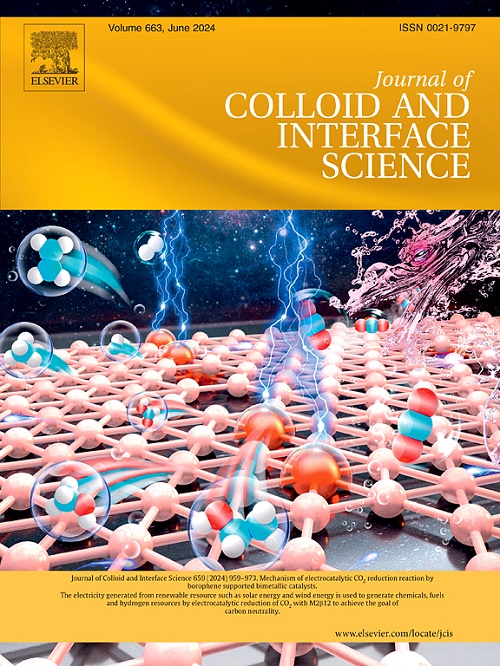Revealing electric field on low temperature ammonia decomposition activity over ceria-supported catalyst
IF 9.7
1区 化学
Q1 CHEMISTRY, PHYSICAL
引用次数: 0
Abstract
Ammonia decomposition is a promising strategy to address critical challenges in hydrogen storage and transportation, thereby facilitating the widespread adoption of fuel-cell technologies. However, conventional catalytic require harsh conditions (600 °C) for complete conversion. In this study, we report nanocluster Ru/CeO2 and Ni/CeO2 catalysts integrated with electric field-assisted catalysis to achieve efficient ammonia decomposition under significantly milder conditions (≤400 °C). With electric field, Ru/CeO2 and Ni/CeO2 achieve 100 % and 60 % conversion at 400 °C, and maintain 62 % and 15 % conversion even at 150 °C accompanied by substantial reductions in activation energy (79.5 % and 78.9 %, respectively). Long-term stability tests reveal minimal activity loss (<3 %) over 48 h. Mechanistic studies show that the electric field promotes the formation of Ru-O-Ce bonds, thereby enhancing the strong metal-support interaction (SMSI). This facilitates electron transfer from CeO2 to the metal site, enhancing NH3 adsorption and activation, while weakening the interaction between metal and N to promote N2 desorption. Additionally, electric field-induced proton hopping accelerates hydrogen spillover and suppresses hydrogen poisoning. This work provides a new approach for low temperature, high efficiency ammonia decomposition, offering a viable path for next-generation hydrogen energy infrastructure.

揭示电场对二氧化铈负载催化剂上低温氨分解活性的影响
氨分解是一种很有前途的策略,可以解决氢储存和运输的关键挑战,从而促进燃料电池技术的广泛采用。然而,传统的催化需要苛刻的条件(600°C)来完成转化。在这项研究中,我们报道了纳米簇Ru/CeO2和Ni/CeO2催化剂与电场辅助催化的集成,在更温和的条件下(≤400°C)实现了高效的氨分解。在电场作用下,Ru/CeO2和Ni/CeO2在400℃下的转化率分别达到100%和60%,在150℃下仍保持62%和15%的转化率,同时活化能显著降低(分别为79.5%和78.9%)。长期稳定性测试表明,在48小时内活性损失最小(< 3%)。机理研究表明,电场促进了Ru-O-Ce键的形成,从而增强了强金属-支撑相互作用(SMSI)。这有利于电子从CeO2转移到金属位点,增强NH3的吸附和活化,同时减弱金属与N的相互作用,促进N2的脱附。此外,电场诱导的质子跳变加速了氢的外溢,抑制了氢中毒。该研究为低温高效氨分解提供了新途径,为下一代氢能基础设施提供了可行的途径。
本文章由计算机程序翻译,如有差异,请以英文原文为准。
求助全文
约1分钟内获得全文
求助全文
来源期刊
CiteScore
16.10
自引率
7.10%
发文量
2568
审稿时长
2 months
期刊介绍:
The Journal of Colloid and Interface Science publishes original research findings on the fundamental principles of colloid and interface science, as well as innovative applications in various fields. The criteria for publication include impact, quality, novelty, and originality.
Emphasis:
The journal emphasizes fundamental scientific innovation within the following categories:
A.Colloidal Materials and Nanomaterials
B.Soft Colloidal and Self-Assembly Systems
C.Adsorption, Catalysis, and Electrochemistry
D.Interfacial Processes, Capillarity, and Wetting
E.Biomaterials and Nanomedicine
F.Energy Conversion and Storage, and Environmental Technologies

 求助内容:
求助内容: 应助结果提醒方式:
应助结果提醒方式:


